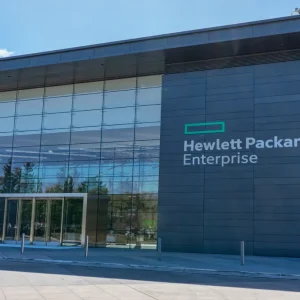
The way consumers interact with brands has never been more varied than it is today. Written communications and phone calls are on the decline, and even emails are proving too arduous for many; texting, live web chat, digital communications and social media are now front of mind for many consumers. The imperative is on ease and simplicity.
A recent Ofcom report has revealed that smartphones have overtaken laptops as the most popular device for getting online, with two thirds of people in the UK now owning a smartphone and using it for nearly two hours every day to browse the internet, access social media, bank and shop online.
It is this digital transformation that has required brands to re-evaluate how they engage with their customers. Amazon, for example, has certainly been a trend-setter in this field by building a fully digitised business. The common theme has been the company’s commitment to providing the best customer experience. Foreseeing the consumer appetite for investigating and ultimately buying products and services through digital channels, Amazon understood the value of efficiency, reliability and personalisation – the right products and services to the right people using a consistent, user friendly engagement model.
This approach has demonstrated challenges and opportunities in the way that customer interactions are managed but also how businesses as a whole can embrace the opportunities by the redefinition of their business operations to support greater digital engagement with customers. While in the past this may have been viewed as a challenge to the established status quo, digital engagement must today be seen as an opportunity for service to become a key differentiator against traditional competitors and new challengers. So how can enterprises achieve this?
Invest in the personalised customer journey
People respond to personalised information and services. If we take finance as an example, this is a sector that traditionally relied on face-to-face interactions in branches to build relationships, yet customers now regularly use smartphone apps or the bank’s website for less complex interactions such as viewing statements, checking balances and making bill payments or balance transfers.
The banking industry understands that it is still important to have physical branches to maintain relationships and to ensure customer inclusion and personalisation but it is also acutely aware that these facilities will normally be reserved for more complicated transactions such as discussing a mortgage, completing a loan application or reviewing a business proposition.
This changing dynamic relies upon, and is built around, the effective provision of technology and as a result falls under the remit of the modern CIO. In most instances this represents a significant change from the way the traditional CIO has operated. Previously the CIO had been focused on their own customers in the form of employees, with the aim of providing them with the tools they need to get their job done.
Listen to customers through front-line staff
With the customer increasingly being placed at the heart of an enterprise’s business roadmap, the CIO has to consider how consumers want to interact with front line staff. This requires greater focus on the services delivered to the line of business, moving away from technology silos to deliver great customer experience and ultimately increased revenues. IT must support the needs and pace of the business to differentiate the customer experience.
Not only does building digital relationships with customers improve loyalty, but it also helps businesses to become more operationally efficient. The digital interaction with a customer is a cost effective and personalised way to service the customer’s requirements.
Collaboration stimulates innovation
The delivery of services rather than technology is now a key part of the CIO’s remit and increasing collaboration with the likes of the Chief Marketing Office (CMO) and Chief Digital Officer (CDO) around projects will better align IT with the needs of the business. Many sectors have viewed the CDO role as a catalyst to accelerating the pace of the business – whilst creating an opportunity to place demands on IT to change gears in how it supports a more agile business.
This has often created some healthy competition between the CDO and CIO in the drive for business differentiation, whilst retaining operational and security compliance. Combining varied backgrounds and experiences lends itself to creating new and innovative ways of improving customer services.
A focus on digital as a differentiator can play a key role in employee engagement and talent recruitment as well. It has been proven that greater workforce engagement drives increases in productivity with more collaboration via digital media being a major factor in this area.
With the digital era proving to be the hotbed of innovation, it is now more important than ever that enterprises build closer relationships with customers through digital across all channels whether they be online, mobile or traditional branch, store or contact centre. Digital engagement with customers as part of a redefined branch or store improvement program leverages a significant asset in the real estate footprint, takes advantage of the customer’s knowledge of services or products achieved through other digital channels and offers a digital interaction with the customer at point of sale. In this way, greater personalisation and better customer service is achieved.
The onus is now on the CIO to support the business by adopting strategies that allow front line staff to drive digital customer engagement and create better customer outcomes. Building strong relationships with customers has always been the goal for businesses however today, that responsibility rests on more than just the shoulders of simply sales and marketing.






